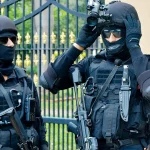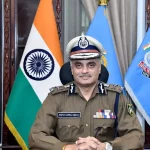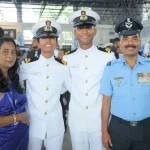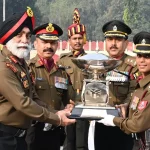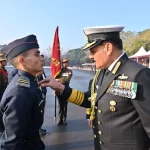The rank of Major in the Indian Army serves as a crucial pillar in maintaining the operational capacity and morale of military units. An officer at this level is tasked with significant authority and a wide variety of responsibilities. They command a company, generally comprising between 120 to 150 soldiers, and their leadership is pivotal to the effectiveness and combat readiness of their troops. This article delves into the powers and duties of an Indian Army Major, exploring their multifaceted role within the military hierarchy.
Introduction
The Indian Army, one of the largest and most formidable forces globally, functions on a well-defined chain of command. Each rank holds specific responsibilities that contribute to the Army’s operational efficacy. At the core of this structure lies the Major rank, a position that symbolizes both authority and accountability. The Major’s role extends beyond executing orders; it encompasses leadership, mentorship, and administration, transforming the dynamics of how military operations are conducted on the ground. Understanding the powers and duties of a Major provides insight into the military’s functionality and the essential qualities of leadership under pressure.
Historical Context
Historically, the role of an army officer has transformed significantly. The British colonial Army structure laid the foundation for the contemporary framework of the Indian Army, where ranks, responsibilities, and command protocols were meticulously defined. The rank of Major was formalized during the British rule and has since evolved. In the Indian Army, the Major’s role has adapted to encompass modern combat scenarios, operational strategies, and technological advancements. This evolution reflects the changing landscape of warfare, the need for adaptability, and the importance of leadership, which remains constant through the ages.
Leadership and Command
One of the primary responsibilities of a Major is to lead a company. This entails making critical operational decisions that directly impact the soldiers under their command.
Decision-Making Authority
A Major exercises tactical decision-making, often in high-pressure environments. They:
- Analyze battlefield information and dynamics.
- Formulate strategies to achieve mission objectives.
- Authorize engagement during combat operations, ensuring that their decisions align with the larger goals of their commanding officers.
Operational Preparedness
An effective Major ensures that their unit is combat-ready at all times. This includes:
- Conducting regular drills and exercises to simulate combat scenarios.
- Assessing the physical and mental readiness of soldiers.
- Implementing strategies to adapt to new technologies and warfare tactics.
Real-world example: During Operation Vijay in Kargil (1999), Majors played a crucial role in executing ground operations, making real-time decisions that were pivotal in reclaiming strategic heights from infiltrators.
Training and Discipline
A Major’s role extends beyond combat to encompass comprehensive training and discipline.
Developing Competence and Skill
To maintain high standards of readiness, a Major:
- Designs and oversees training programs tailored to specific operational needs.
- Ensures that soldiers are proficient in weapons handling, physical fitness, and strategic planning.
- Promotes a culture of continuous learning and improvement.
Instilling Discipline
Discipline is the backbone of military effectiveness. Majors:
- Enforce standard operating procedures (SOPs) meticulously.
- Address behavioral issues, implementing corrective measures when necessary.
A disciplined unit is often a more cohesive and effective fighting force.
Administrative Duties
Administrative responsibilities are integral to a Major’s role and cover logistics, communications, and coordination with higher command.
Logistics Management
A Major is accountable for logistical support, which includes:
- Ensuring the proper maintenance of equipment and supplies.
- Managing the supply chain effectively to ensure troops have access to necessary resources during operations.
- Overseeing the communication and coordination with the subordinate units and higher command.
Communication Skills
The ability to communicate effectively is essential. As a link between the soldiers and higher officers, a Major must:
- Provide clear and concise briefings to troops about operations, duties, and expectations.
- Relay critical information to senior officers accurately.
Welfare and Morale
The welfare of soldiers is paramount, and a Major plays a significant role in ensuring a positive environment that promotes morale.
Addressing Concerns
Majors are often seen as approachable leaders, fulfilling responsibilities like:
- Listening to the personal and professional grievances of soldiers.
- Providing assistance for issues related to family, health, and welfare.
Boosting Morale
Maintaining high morale is essential for operational success. A Major can boost morale through:
- Organizing team-building activities that foster camaraderie.
- Recognizing and rewarding outstanding performance, which motivates soldiers to excel.
Mentorship
Majors serve as mentors to junior officers and enlisted soldiers, providing guidance that shapes their careers and character.
Leadership Development
Through mentorship, Majors:
- Model desired leadership qualities such as integrity, decisiveness, and resilience.
- Guide junior officers on how to effectively lead their teams, reinforcing principles that contribute to effective leadership.
Building Future Leaders
By nurturing the next generation of leaders, Majors indirectly contribute to the Army’s long-term effectiveness and efficiency.
Statistical Data and Research Insights
According to the report published by the Ministry of Defence, there are approximately 1,400 majors in the Indian Army, each responsible for leading a company. Given the average size of a company, this means that a Major directly influences around 120–150 soldiers’ lives and careers.
Research from military leadership studies suggests that effective commanders prominently affect unit cohesion, which directly correlates with operational success in combat scenarios. Units with high morale and strong leadership often outperform their less cohesive counterparts during exercises and real-world engagements.
Comparative Analysis
When comparing the responsibilities of a Major with those of a Captain and a Lieutenant Colonel, distinct differences emerge.
- Captain: Generally leads smaller units and is involved closely in direct task execution. Their role primarily focuses on tactical leadership within their designated area.
- Lieutenant Colonel: A step above Major, responsible for managing multiple companies and strategic planning, thus requiring a broader scope of oversight and a longer reach in decision-making.
The transition through these ranks illustrates a progressive increase in strategic and operational responsibility, highlighting the importance of experience and performance in climbing the military hierarchy.
Challenges and Solutions
The role of a Major is not without its challenges.
Unique Challenges
- Resource Constraints: Often, Majors have to operate with limited resources, including equipment and personnel.
- Mental Health Issues: The pressures of leadership can lead to mental health challenges among soldiers, necessitating proactive measures.
Solutions
- Streamlined Logistics: Implementing efficient logistical frameworks can help optimize available resources.
- Mental Health Support Programs: Enforcing mental health awareness campaigns and training can mitigate risks and foster resilience among troops.
Future Trends and Predictions
The evolving landscape of warfare, with the integration of technology such as AI and unmanned systems, will significantly impact the responsibilities of Majors in the future.
Embracing Technology
Majors will increasingly need to:
- Adapt to technological advancements in combat scenarios.
- Understand how to leverage big data for tactical advantage and operational planning.
The Role of Leadership
With the complexities of modern warfare, the demand for innovative and adaptive leadership will rise. The ability of a Major to guide their troops through these changes will be vital.
Conclusion
In conclusion, the rank of Major in the Indian Army encompasses a broad spectrum of powers and duties that are crucial for the operational effectiveness of military units. From leadership and training to logistics and welfare, Majors act as the cornerstone of their companies, shaping the future of defense through their mentorship and guidance. Understanding the significance of this role not only enriches one’s knowledge of military structures but also highlights the profound implications of leadership within high-stakes environments. The challenges Majors face are formidable, but the solutions and innovations they adopt will continue to define their impact on India’s defence landscape.
For aspiring officers, resources such as SSBCrack and its affiliated materials, including eBooks and online courses, can offer insightful guidelines and preparation strategies. This preparation is essential not just for personal career advancement but for understanding the greater responsibilities that come with leading their nation’s armed forces.








